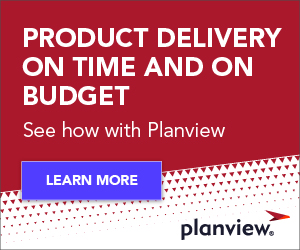
Having played a big role in Planview Enterprise 12, I find myself reflecting on what we are striving to help our customers achieve in terms of prioritization and capacity planning, along with what is happening with IT today.
Technology has integrated itself in every aspect of our lives as well as business. To stay competitive, organizations need innovative technology that interacts with their customers on the front end and integrates with their back- end systems. This poses a tremendous challenge for IT. To drive digital transformation throughout a company’s business capabilities, IT must support the latest innovative technologies while integrating and accommodating old processes.
While IT is drowning in legacy technology and trying to catch up, the business is frantically analyzing their marketplace and determining how to incorporate technology in everything they do. This ranges from the products they sell, to how they sell them, and how they interact with their customers, from marketing to services.
The ability to move faster and be innovative with constrained resources means:
- IT can’t continue to operate as an independent department that just acts as a service provider to the business.
- Organizations need to think differently about how they turn a strategic plan into an actionable one, even (and specifically) in times of uncertainty, with the ability to adapt and react to new information.
- Organizations need a “real” strategic roadmap that they can operate and manage across the enterprise. This roadmap must provide the ability to more effectively communicate, coordinate and prioritize enterprise-wide initiatives as well as constantly update the roadmap with new information.
Gartner notes in an October 2015 report “that approximately 37% of IT spending is now owned by the business side, and we expect that number to rise to 50% by 2017.”* I see this every day in the organizations and the businesses we work with at Planview. IT organizations acting as true partners with their businesses are working with them to prioritize and re-allocate funding and resources. This creates adaptable organizations that are realizing immediate value. But, that isn’t enough.
Think about your organization. Think about the informal network required to deliver products to the market or digital transformative programs that span IT to the business and your customers. How does your organization determine its strategies and create an actionable plan to make those goals a reality?
Alignment of Projects to Strategies Is Not Enough
I’m extremely excited about Planview Enterprise 12, because we have made strategic planning real. New program management functionality and strategic planning capabilities enable you to create a strategic plan that ties outcomes and execution to strategy. You can now define strategies not just in terms of the work and projects, but all the outcomes required to make a strategy come to life in your organization. Outcomes are what your investments deliver in pursuit of strategic goals. Understanding the outcomes needed to deliver the strategy are key to breaking down the silos and bringing expertise across products, technology, applications and services into a plan that crosses business units, teams and geographies.
Rather than just planning and managing products, applications or services separately, you can now plan and manage across portfolios to deliver programs, drive digital transformation, and fuel growth strategies. Technology products can now have roadmaps for not just the product, but for all of the outcomes – the applications, technologies and services – that are part of their products.
If you are taking a product to market, what are the outcomes to get it to market, whether it be through a physical store, an online marketplace or some other channel? If you are improving a customer experience, what are the outcomes you need to integrate it with the organization so it isn’t disconnected and truly transforms business capabilities? Outcomes enable “the what,” so everyone can understand all aspects of what is to be delivered and how individual priorities fit in that strategic roadmap in order to execute across the organization.
From an execution standpoint, we have enabled organizations to not just create strategic goals that decorate the walls of conference rooms. We have provided a roadmap giving direction to what outcomes the organization needs to deliver to realize the intended revenues or benefits of their strategic direction.
It’s about creating a map, with all the stops and cross sections to get to your destination, even for the most complex of strategies. But then, update it based on recent real-time shifts, developments, tested and modified assumptions, other priorities, resource constraints, and the daily changes, risks and issues in execution. It is a multi-dimensional, living map. Meaning that, as you learn new information, you can adjust the plan to continuously evaluate and update the roadmap, which feeds into prioritization and capacity planning.
For organizations looking to bring their strategy to life through multiple outcomes, and secure the capacity to execute on the plan, there is just one answer. The answer is 12; Planview Enterprise 12.
Check back for additional ways Planview Enterprise 12 integrates strategy and execution.
*Source: Gartner report, “Where Your PPM Career Won’t Be in 2020: Program Managers Will Focus More on Integration Than on Delivery,” by Michael Hanford, October 29, 2015.




